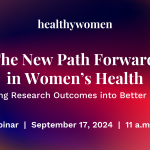Arterial stiffening is a critical issue in aging, leading to hypertension, cardiac remodeling, and other health issues. The factors contributing to this problem include changes in cell behavior affecting vessel constriction and dilation, as well as alterations in the extracellular matrix reducing tissue elasticity. Repairing the aged extracellular matrix is an area that requires more research and development focus, despite its significance.
Arterial stiffness, a key indicator of vascular health, reflects the elasticity and compliance of arteries. Central arterial stiffness, measured by pulse wave velocity, is a predictor of cardiovascular events and mortality independent of traditional risk factors. Aging leads to increased arterial stiffness due to changes in both active and passive stiffness components.
Active arterial stiffness, controlled by vascular smooth muscle cells (VSMCs) and endothelial cells (ECs), plays a crucial role. ECs release bioactive molecules, including nitric oxide (NO), influencing the vasoconstriction and vasodilation of VSMCs. Dysfunction of ECs results in impaired NO production, leading to increased vasoconstriction and oxidative stress, contributing to cardiovascular diseases.
Passive stiffness involves structural proteins in the extracellular matrix (ECM), such as collagen and elastin. Collagen provides tensile strength, while elastin imparts elasticity. The balance between these proteins is essential for maintaining arterial integrity and resilience to mechanical stress. Different anatomical regions of the aorta display distinct mechanical properties and endothelial responses due to structural and environmental variations.





